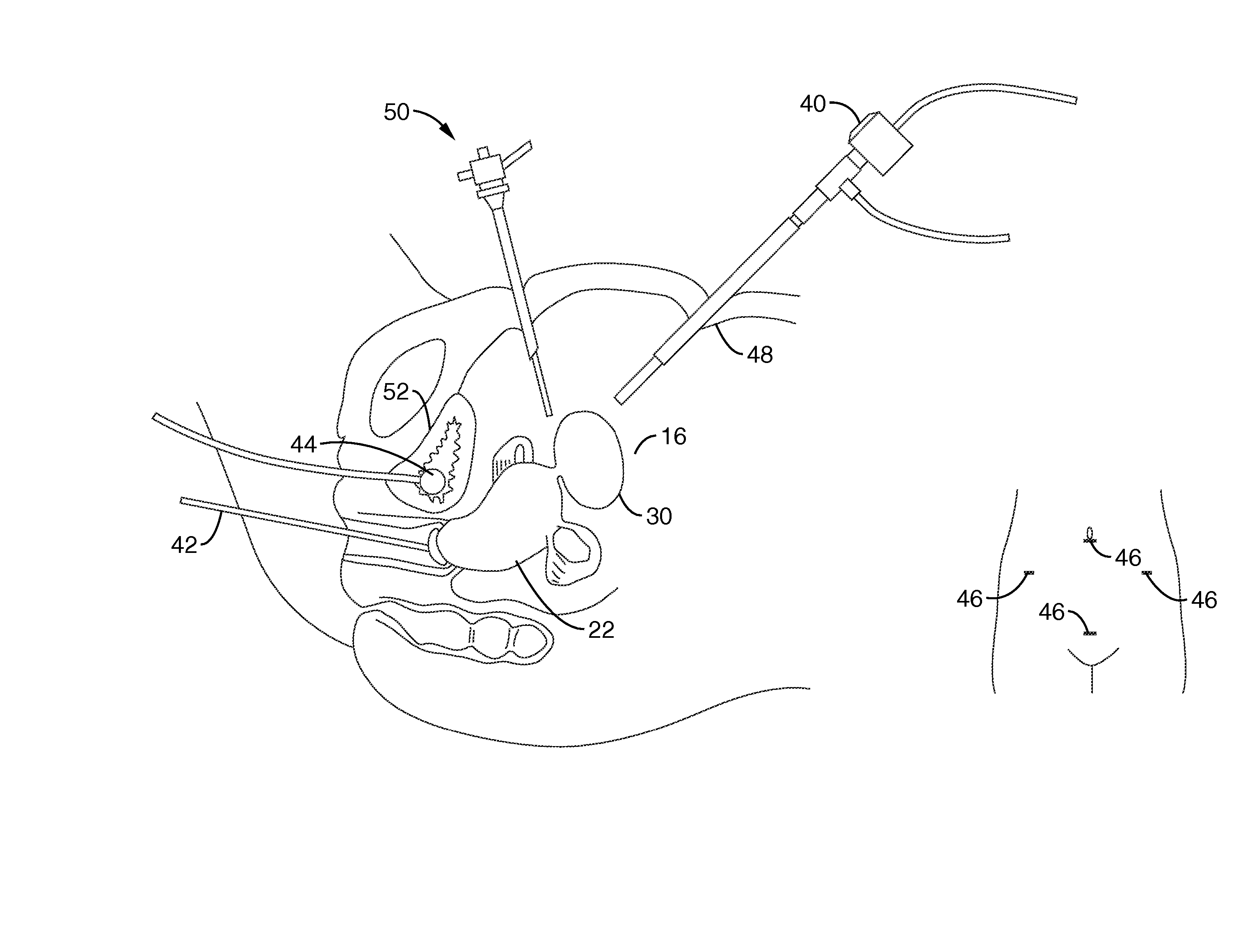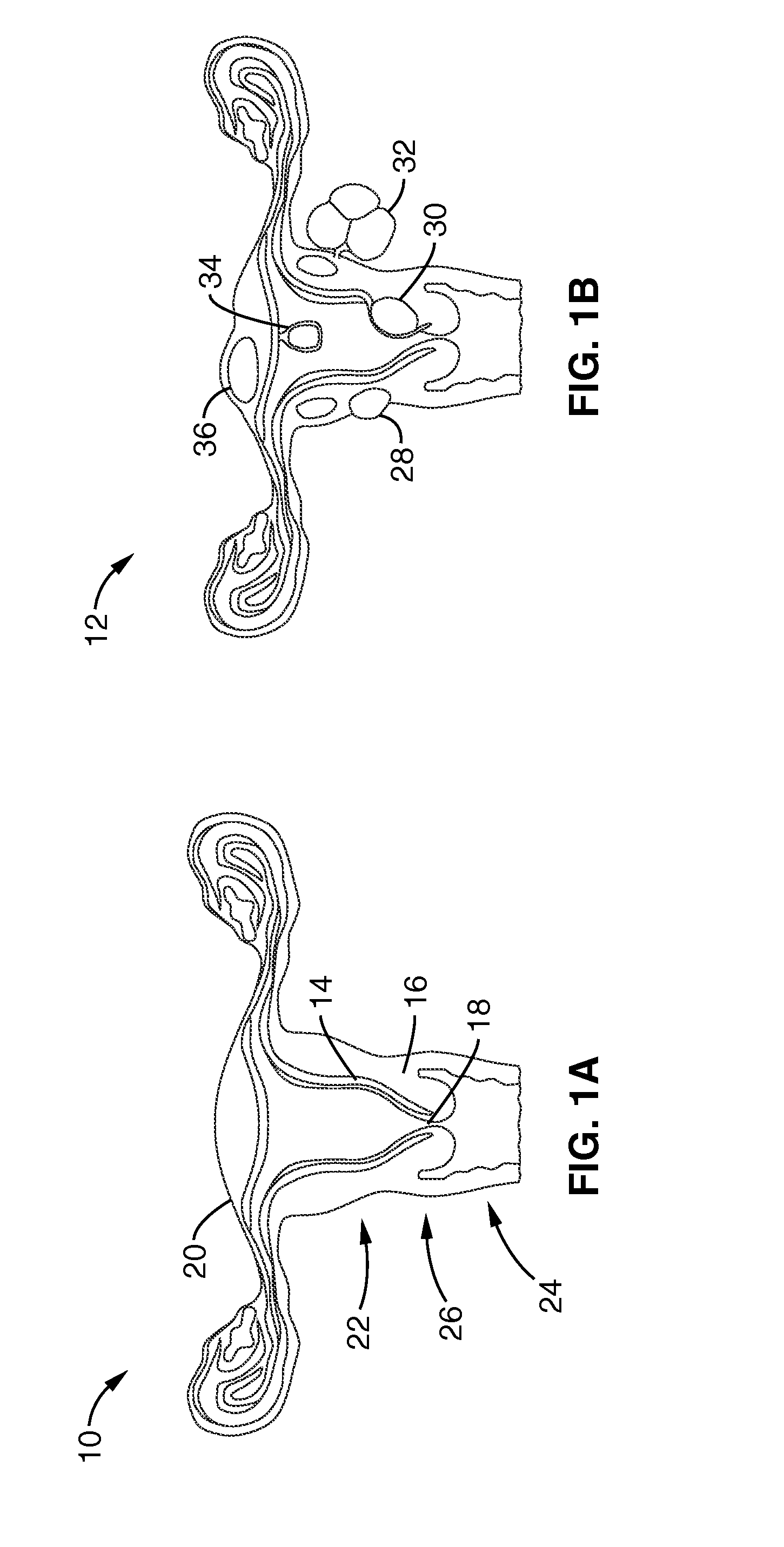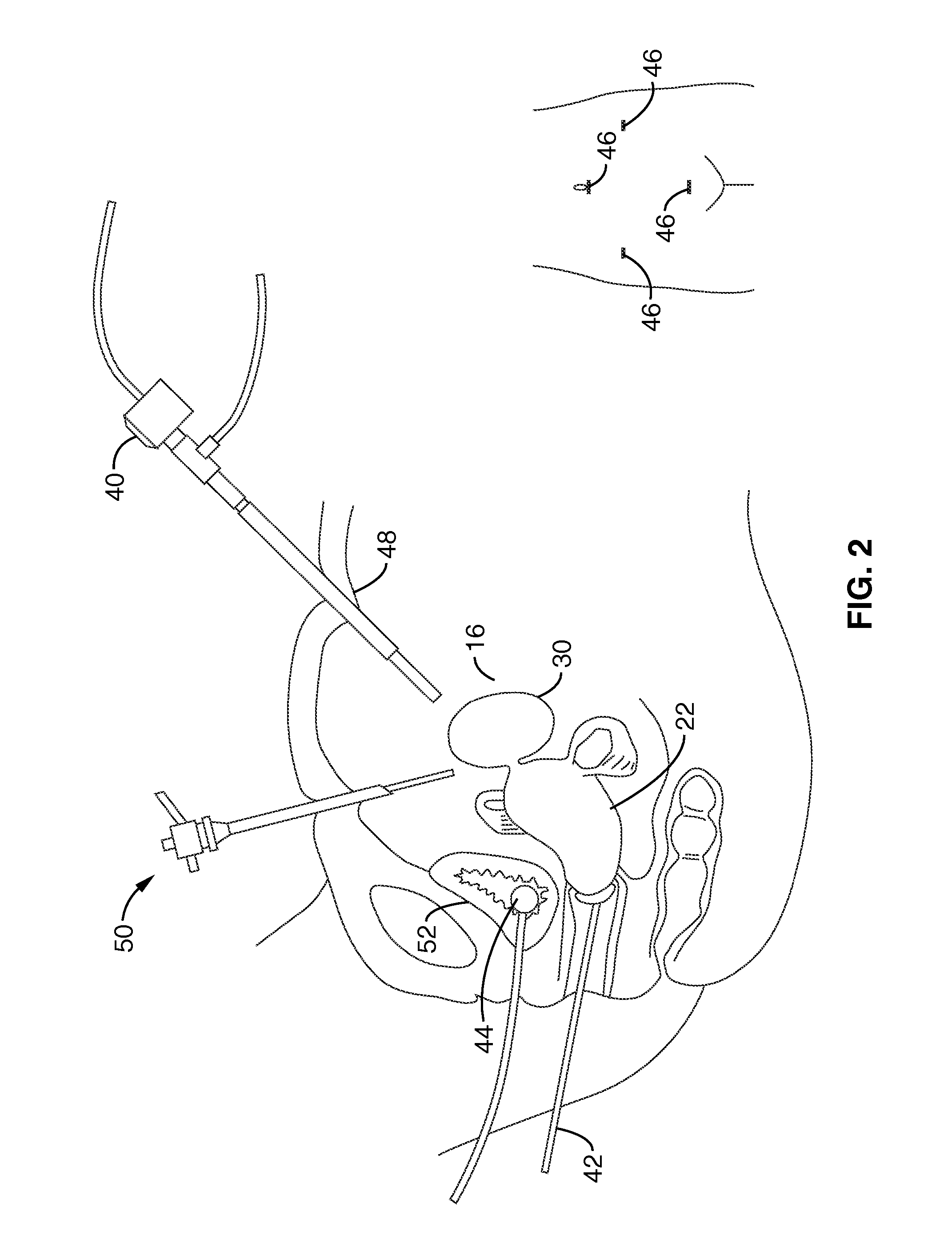Method of thermal treatment of myolysis and destruction of benign uterine tumors
a technology of myolysis and uterine tumors, applied in the field of ultrasound therapy of uterine fibroids, can solve the problem of thermally fixing volume, and achieve the effect of reducing treatment time and improving the chance of complete regression
- Summary
- Abstract
- Description
- Claims
- Application Information
AI Technical Summary
Benefits of technology
Problems solved by technology
Method used
Image
Examples
experiment # 1
[0109] Experiment #1
[0110] Ultrasound interstitial applicators were evaluated for interstitial hyperthermia for combination with radiation or drug therapy, as well as localized thermal ablation. The interstitial ultrasound applicators utilized arrays of small tubular ultrasound radiators, designed to be inserted within plastic implant catheters typically used for interstitial HDR brachytherapy. Water-flow was used during power application to couple the ultrasound and improve thermal penetration. Multi-transducer devices were evaluated with transducer diameters between 1.2 mm-3.5 mm and outer catheter diameters between 2.1 mm (14 gauge) and 4.0 mm (12 Fr), respectively, with 1.5 mm OD transducers and 13 g (2.4 mm OD) catheters the most common configuration. The applicators were fabricated with multiple tubular segments, with separate power control, so that the power deposition or heating pattern could be adjusted in real time along the applicator axis.
[0111] The ultrasound energy em...
experiment # 2
[0123] Experiment #2
[0124] A family of interstitial ultrasound applicators was fabricated using 2-4 cylindrical piezo-ceramic crystal transducers (PZT-4) with outer diameters (OD) of 1.5 or 2.5 mm and lengths of 10-15 mm. The configurations tested were 1.5 mm OD×10 mm long transducers in linear arrays of two, three and four adjacent transducers, an array of three 2.5 mm OD×15 mm long adjacent transducers, and an array of one 2.5 mm OD×15 mm long transducer adjacent to two 2.5 mm OD×10 mm transducers.
[0125] The operating frequencies of the transducers ranged from 6.5 to 8 MHz. For some of the applicators, the transducers were sectored to produce a 180° actively acoustic sector for directional power deposition. The transducers were mounted on support structures, and a bio-inert plastic layer was applied for electrical and biological insulation. The 1.5 mm OD applicators were inserted into 13 gage brachytherapy catheters (2.4 mm OD), and the 2.5 mm OD applicators into custom PET cathe...
PUM
 Login to View More
Login to View More Abstract
Description
Claims
Application Information
 Login to View More
Login to View More - R&D
- Intellectual Property
- Life Sciences
- Materials
- Tech Scout
- Unparalleled Data Quality
- Higher Quality Content
- 60% Fewer Hallucinations
Browse by: Latest US Patents, China's latest patents, Technical Efficacy Thesaurus, Application Domain, Technology Topic, Popular Technical Reports.
© 2025 PatSnap. All rights reserved.Legal|Privacy policy|Modern Slavery Act Transparency Statement|Sitemap|About US| Contact US: help@patsnap.com



